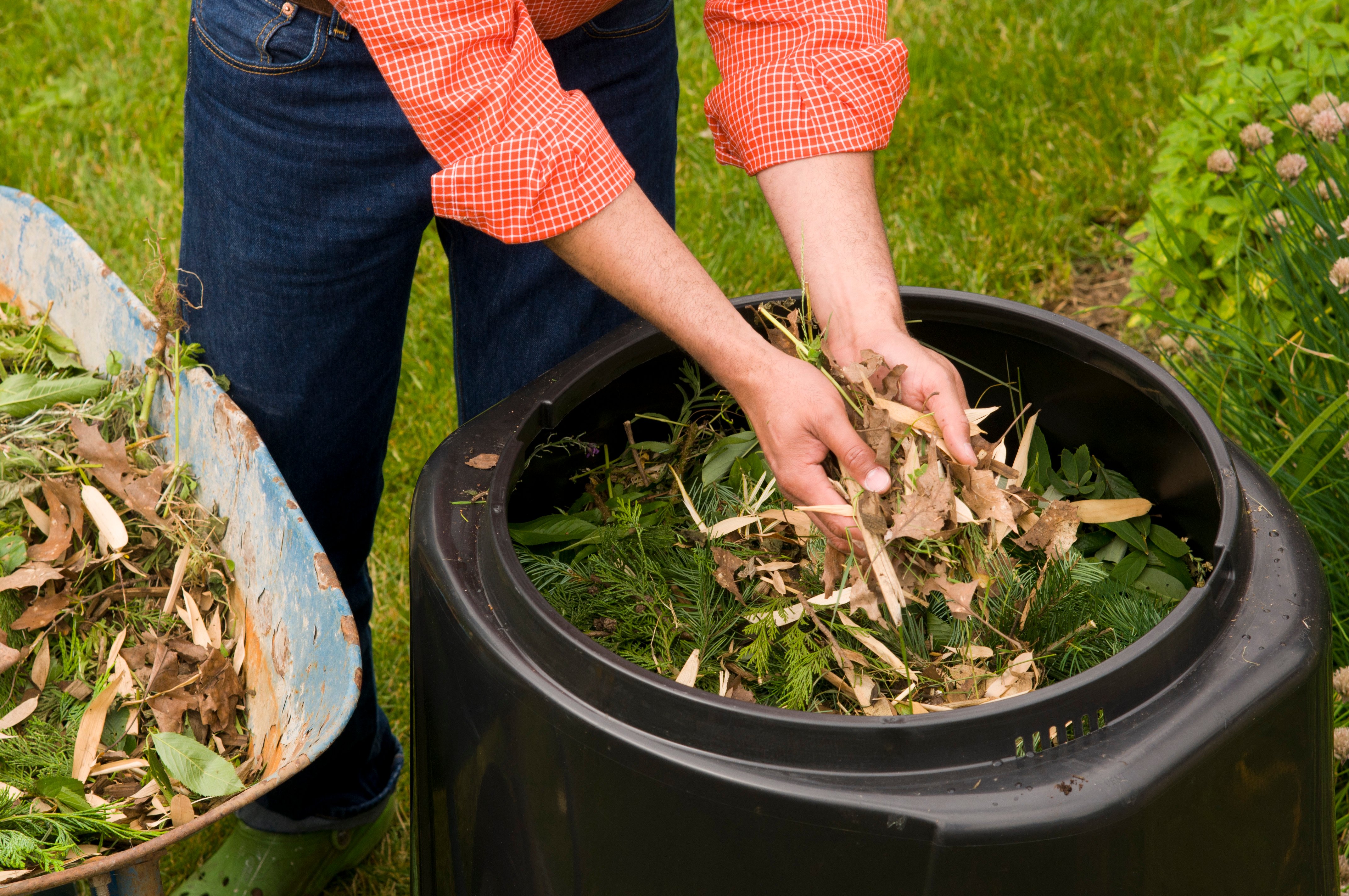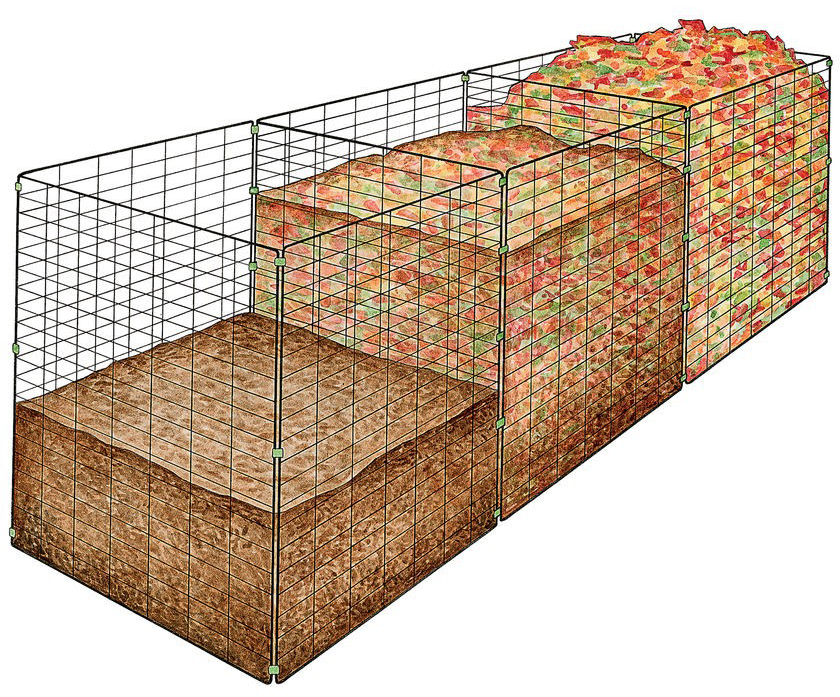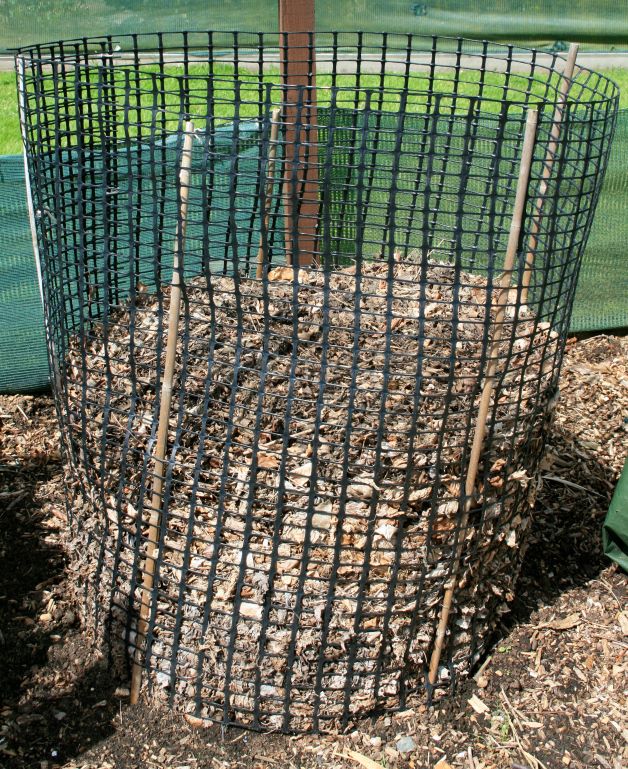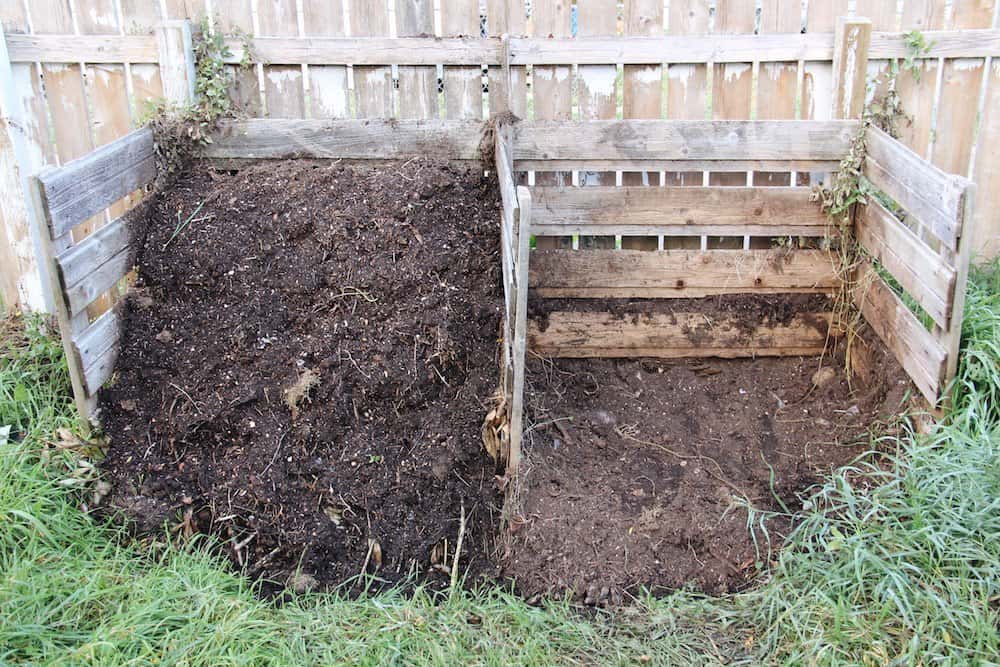
How To Build A Compost Bin For Leaves
6 Ways to Build a Compost Bin 1: The Compost Heap Growing up, we composted by using a heap. We collected kitchen scraps in a compost pail, and my brothers and I took turns emptying it onto a giant compost pile in the corner of the yard. This heap is also where we put grass clippings and other yard waste.

Compost pile
Maple Leaves. When it comes to the best of the best, maple leaves are certainly at the top of the list. Maple leaves have higher levels of nitrogen and calcium, which of course, are both perfect for plants, and a compost pile. The thin skins of maple leaves also shred easily and break down quickly in a compost pile.

Lacewing composted bin leaf Wooden Compost Bin, Leaf Compost, Compost Maker, Impact Of Global
Here are five easy steps to making an effective leaf compost for your lawn: 1. Shred and Collect Leaves. The first step to making leaf compost is shredding the leaves. Using shredded leaves for your compost will aid in expediting the decomposition process. Prior to shredding the leaves, make sure they are dry. Set mower height to about three to.

45 DIY Compost Bins To Make For Your Homestead Diy compost, Grass clippings
The basic compost bin is 3 square feet (0.5 sq. m.). This gives enough room to turn the compost to increase the air circulation and mix in moist material. Composting leaves in garden soil as a top dressing is also suitable. You can chop up the leaves with your mower and spread them over your vegetable garden.

Tips for composting success Metro
Making leaf compost or leaf mold is a cheap, easy, and environmentally-friendly project you can complete at home, and the finished product can enrich your garden soil or flower beds. Homemade compost insulates and adds nutrients to the soil as well as helps control weeds and retain moisture.

Wooden Compost Bin Sturdy Design Archwood Greenhouses
The ideal ratio for a well-balanced compost pile is four parts brown material to one part green material. Start by placing a layer of brown material, i.e., shredded leaves, about 6 to 8 inches (15 to 20.5 cm) deep. Then, add a 1-inch (2.5 cm) layer of green material such as manure, grass clippings, or green nitrogen source.

Leaves in compost bin stock image. Image of environmental 185407911
Composting is an easy process that takes green waste (e.g., fruit, vegetables, weeds, eggshells, and coffee grinds) and brown waste (e.g., dry leaves, sticks, cardboard, and newspaper) and mixes it until everything decomposes. The resulting nutrient-rich mixture can be used to feed plants and improve soil.

3 Bins_Leaf Compost The Dirt on Dirt
Step 1 Drive pressure-treated posts into the ground to make a circle or square, 1m high. Keep posts vertical or slightly angled out to make filling with leaves easy. Driving wooden stakes into the ground Step 2 Wrap wire mesh, with holes no bigger than 50mm, around the posts.

How to Make an Easy DIY Oak Leaf Compost Bin
Leaves provide a high carbon source or 'browns' for your compost. The carbon/nitrogen (or C/N) ratio of leaves is usually over 30, often around 50. That is, they are low in nitrogen which is often hard to find in other sources of composting material. Common Problems With Composting Leaves

Composting Leaves How To Compost Leaves
Composting leaves is a cost-effective way to create nutrient-rich soil amendments for your garden. Shredding leaves and adding a nitrogen source are essential steps in the composting process.

Leaf Mold How To Make Leaf Compost For Your Garden Home for the Har
Build A New Compost Bin That's Just For Leaves! It seemed like a perfect idea to build a dedicated compost bin for our fall leaves. But even better, we already had a perfectly sized section of wire fencing that will work great for the project.

Wooden Compost Bin Sturdy Design Archwood Greenhouses
Compost can provide a huge range of benefits to your garden - from adding a slow release of nutrients to your soil, to improving soil structure, to balancing your soil's pH, to increasing water retention. There are few garden situations where this amendment won't be a huge help.
:max_bytes(150000):strip_icc()/compost-bins-89020511-5b3302aa46e0fb0037c6ade7.jpg)
7 Things to Do With Fall Leaves
Making a leaf mould compost bin is relatively simple, and you have various options. You can either convert a plastic bin (like your average garden scrap trash bins), use a big trash bag, or build a 3×3 foot bin directly in your backyard using wire or wood scraps like old pallets.

Pristine white lattice leaf compost bin
Composting leaves, whether through leaf compost or leaf mulch, offers numerous benefits, including improved soil fertility, weed and pest control, and disease prevention. By following the techniques outlined in this guide, you can harness the potential of fallen leaves to create nutrient-rich compost for your garden. So, this fall, don't view.

Leaf Compost Bin GardenFork.TV DIY Living
Leaf mold is said to have very good water retaining capacities and can be used for potting mixes, or used for enriching soil. Given the copious amounts of dry leaves available in the fall you may want to consider making leaf mold. Related reading: Fall Composting

DIY Ingenious Compost Bin Ideas for Your Garden
Compost heaps or bins should ideally be piled 4 feet high, and just as deep and wide, and should be turned regularly. Alternatively, you can make leaf mould that will be low in nitrogen but will add valuable humus to your soil.